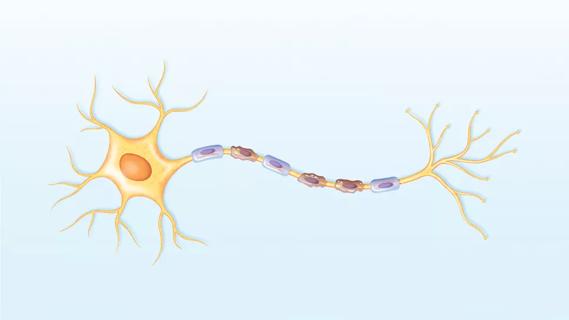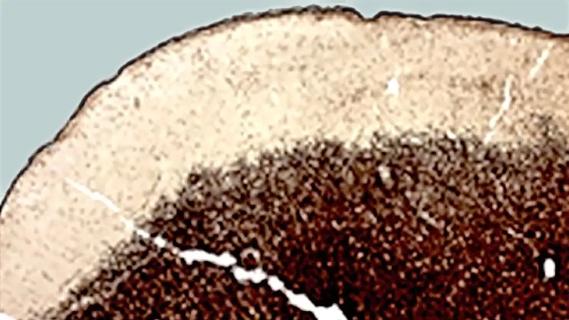Cannabinoid oromucosal spray is poised for FDA submission in 2021

Nabiximols, a complex botanical medication formulated from extracts of the cannabis plant, improves spasticity in patients with multiple sclerosis (MS) without producing the accompanying muscle weakness sometimes observed with other antispasticity medications, according to an analysis of three European studies.
Cleveland Clinic is a non-profit academic medical center. Advertising on our site helps support our mission. We do not endorse non-Cleveland Clinic products or services. Policy
“There also was no notable decrease in patients’ preferred walking speed,” reports Francois Bethoux, MD, of Cleveland Clinic’s Mellen Center for Multiple Sclerosis Treatment and Research. Although he did not participate in the studies analyzed, as an MS rehab expert and a consultant to GW Pharmaceuticals/Greenwich Biosciences, Dr. Bethoux was asked to present the European data at the virtual 2020 annual assembly of the American Academy of Physical Medicine & Rehabilitation in November.
Nabiximols is approved in over 25 countries outside the United States under the brand name Sativex® and is self-administered as an oral spray. “It’s been many years since there has been a new treatment for spasticity in MS with a unique mechanism of action, so this drug would be a welcome addition to our armamentarium,” says Dr. Bethoux, who also serves as Chair of Cleveland Clinic’s Department of Physical Medicine & Rehabilitation. “In addition, nabiximols can be taken several times a day on an as-needed and as-tolerated basis, while currently available antispasticity agents are generally given on a schedule. This gives patients an opportunity to adjust the dosing schedule based on their needs.”
The cannabis extracts tetrahydrocannabinol (THC) and cannabidiol (CBD) are primary components of the medication, and work via the endocannabinoid system. For instance, THC has been observed to impact CB1 and CB2 receptors, which can be found in the nociceptive and spasticity pathways of the brain and spinal cord, as well as in the peripheral nervous system.
“Published reports suggest that a large number of persons with MS have used or currently use cannabis to help relieve symptoms related to spasticity,” observes Dr. Bethoux, “so it is not a surprise that a cannabis extract could be efficacious.” He notes that Cleveland Clinic, like many other health systems, has a policy that prohibits clinicians from condoning or making referrals to medical marijuana providers, so the availability of a regulated prescription option could be helpful to both patients and clinicians.
Dr. Bethoux’s presentation focused on an analysis of three randomized controlled trials conducted at European hospitals involving more than 500 patients assigned to receive either nabiximols or placebo. All subjects had MS and spasticity that was not adequately controlled by current medications.
All three trials, which lasted from six to 16 weeks, evaluated spasticity using the Numeric Rating Scale (NRS). Two trials each evaluated muscle strength using the Motricity Index (MI) for legs, and two assessed mobility via the timed 10-Meter Walk Test. Two of the studies used an enriched trial design, in which patients were treated with single-blind nabiximols in phase A. Subjects who reported at least a 20% improvement in spasticity on the NRS were then randomized to nabiximols or placebo in phase B. The aim was to identify any correlation between spasticity and muscle strength or walking speed during the randomized portions of the studies.
Each of the trials demonstrated a statistically significantly greater improvement in spasticity from baseline with nabiximols compared with placebo, with treatment differences of 0.52 to 1.9 points on the NRS in favor of nabiximols.
Notably, the improvement in spasticity was not accompanied by an increase in muscle weakness or a change in walking speed. There was no meaningful association between change in spasticity on the NRS and change in MI score, according to Dr. Bethoux, and there was a weak-to-negligible correlation between change in spasticity on the NRS and change in preferred walking speed.
The European trials were sponsored by GW Pharmaceuticals/Greenwich Biosciences, which owns the commercial rights to nabiximols in the United States. The company is in the process of launching five phase 3 clinical trials of the compound in the United States, with plans to use data from one of those trials and the three European studies from the current analysis to submit a New Drug Application to the FDA in mid-2021.
“Quite a few studies of nabiximols have been conducted in addition to the three I presented,” says Dr. Bethoux, who adds that many have been completed in Europe. “Some have been sponsored by the company, and others have been initiated by investigators independently to look into side effects and patient perceptions of nabiximols.” He notes that these studies have found the medication to be well tolerated and have revealed no concerning safety signals.
“However, we will be looking to see if nabiximols affects cognitive function, since marijuana can impair memory and processing speed,” Dr. Bethoux observes. “Importantly, nabiximols has not been found to impact the ability to drive safely, which has been a concern with the use of cannabis.”

Early experience with the agents confirms findings from clinical trials

Findings challenge dogma that microglia are exclusively destructive regardless of location in brain

New review distills insights from studies over the past decade

Updated consensus approach helps clinicians efficiently improve diagnostic accuracy

The disease is not a barrier to pregnancy, but risks from disease-modifying therapies must be managed

In search of optimal imaging biomarkers, best methods for long-term follow-up

Risk of new MS activity is small in those older than 55 with stable disease who stop MS therapy

$1.1M award expands follow-up to six years with focus on clinical endpoints